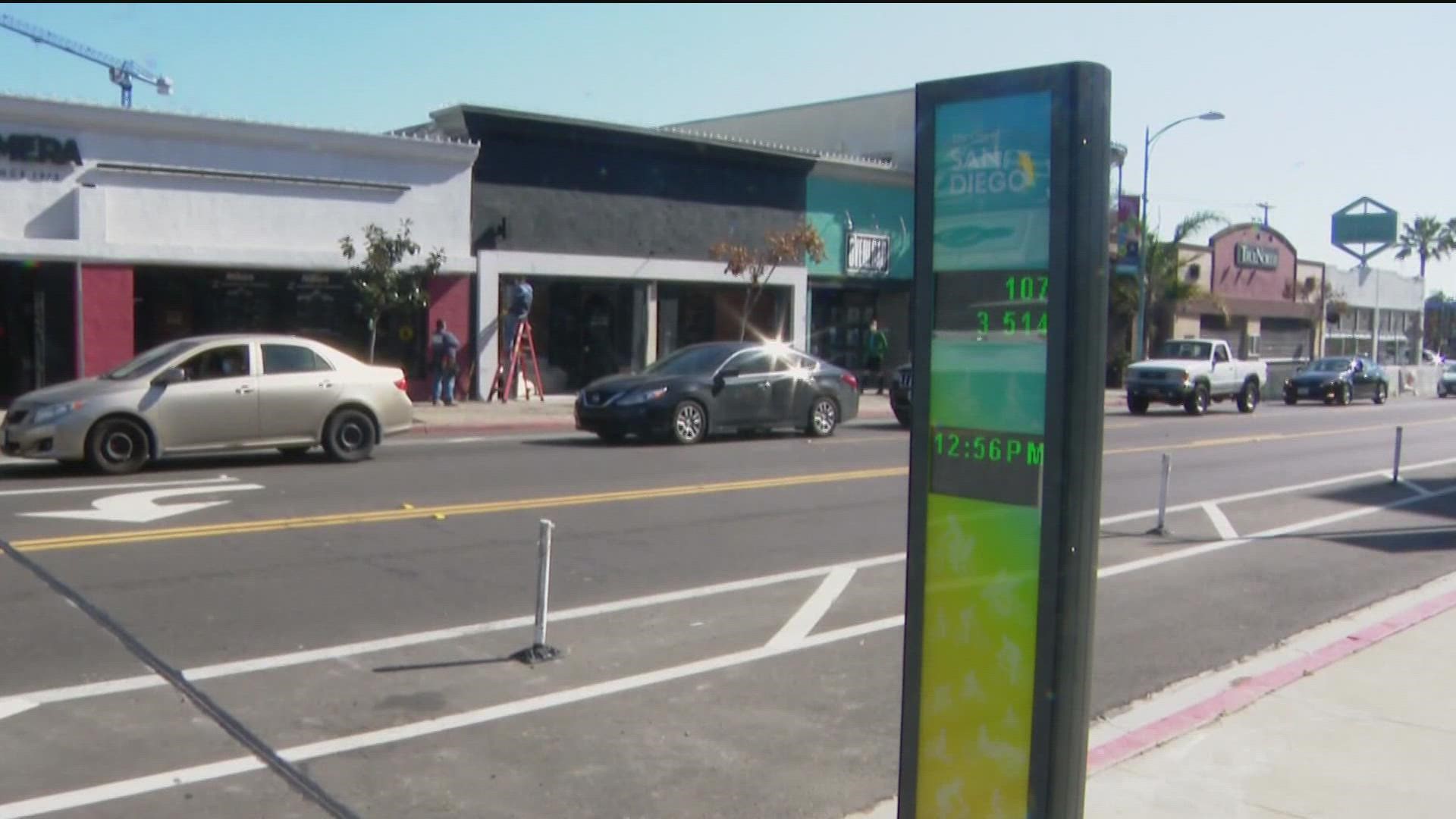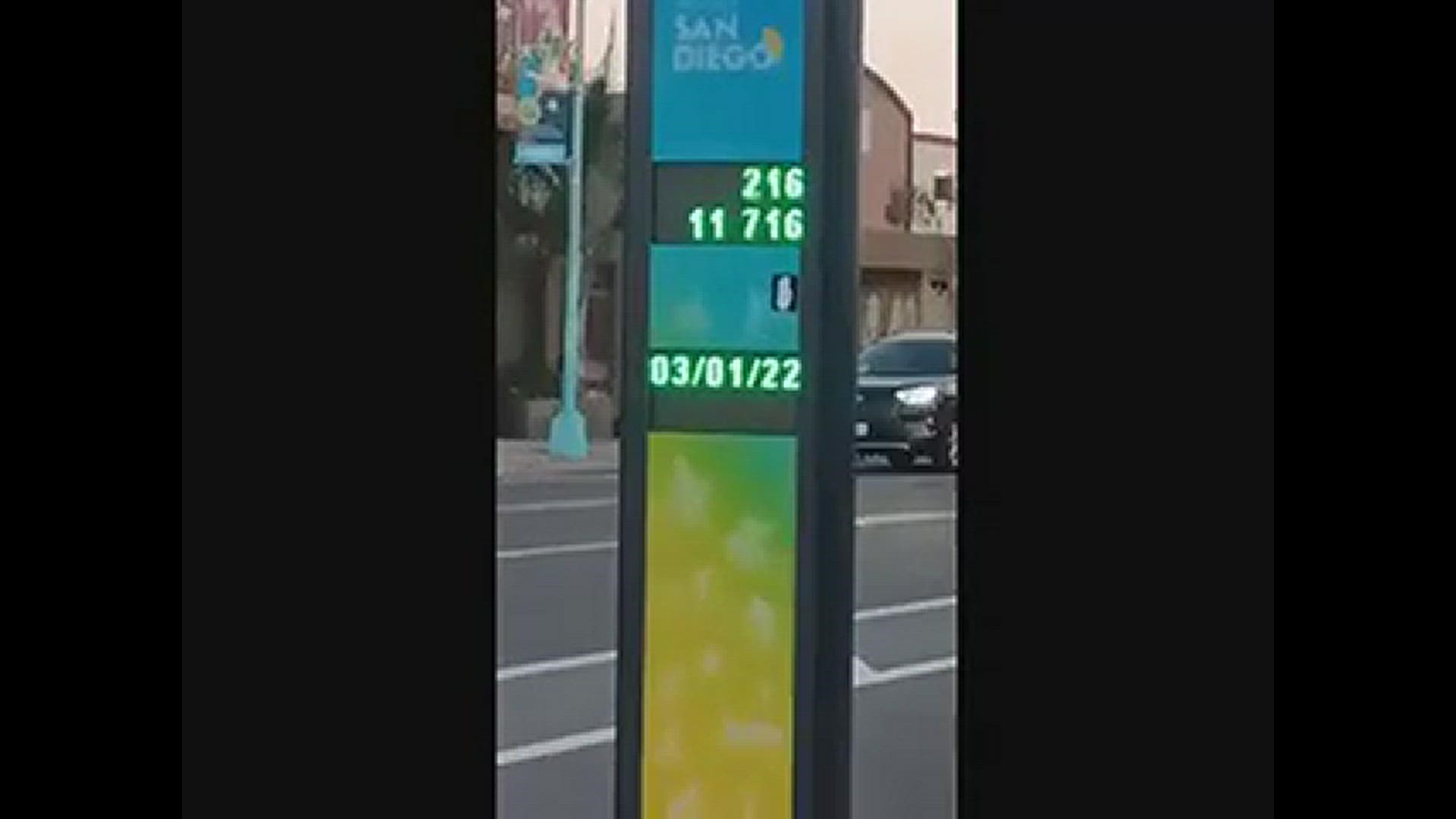SAN DIEGO — The bike counter that the City of San Diego installed along 30th street in North Park is miscounting the number of bicycle riders that ride through the busy stretch of Uptown.
CBS 8 was on hand to watch the newly-installed bike counter tick up when a car was parked in the bike lane and watched some single cyclists get counted twice.
Cycling advocates say they never expected the counter to be 100-percent accurate, while some residents and business owners say the inflated count only validates what they have long believed to be the case, that the use of the new protected bike lane along 30th Street is far lower than the city has claimed it to be.
WATCH RELATED: New bike lane project breaks ground in North Park
Business owners and some residents oppose the protected bike lanes. They say the removal of parking has put the brakes on foot traffic in their stores and restaurants and feel the lanes should be placed along more residential streets.
Cyclists and others, however, say San Diego needs to shift from a car-centric mindset to a more pedestrian-dominant lifestyle. Doing so will slow climate change and at the same time increase foot-foot traffic in neighborhood business districts. More importantly, they say protected bike lanes will ensure the safety of cyclists and move the city closer to its goal of zero pedestrian deaths.
Pat Sexton has suspected the daily cyclist count is off. She doesn’t see evidence of hundreds of cyclists commuting down 30th Street like the counter shows them to be.
In February, Sexton claims she was walking along 30th when she and her friend saw the bike counter tick up without any bikes or scooters in sight.
“My question has always been, ‘Was it calibrated before it was installed, once it was installed, and how frequently has it been calibrated since?’ I have not had those questions answered," said Sexton.
On June 1, CBS 8 monitored the bike counter to observe its accuracy.
Over the course of nearly three hours, CBS 8 saw approximately 50 cyclists pedal past the tracker. During that time, 6 cyclists were counted twice. A large armored truck that stopped in the bike lane was also counted as a bike.
CBS 8 also witnessed two occasions where bikes were not counted as well.
Liz Saba owns Presley & Co Fine Jewelers, three blocks from the bike counter. Saba is one of several business owners who fought the city proposal to remove the street parking in front of their businesses in order to install the protected bike lanes. She says her store, as well as others nearby, has seen a drop in sales since the lanes went in.
“I know of at least three other businesses that are going to be closing soon because the rent keeps going up but there’s no parking. There’s no business. so they’re going out and trying to find locations in other areas.”
WATCH RELATED: How many people are using the bike lanes in three San Diego neighborhoods
Added Saba, “We’ve seen a huge decline, thirty or forty percent some months. As soon as the bike lanes went in, our business dropped significantly"
Saba says she has suspected the counter was not accurate.
“The counter has a mind of its own. Sometimes the count goes up two, sometimes it’s three. Nobody will come out and fix it so how can we ever get an accurate count when the counter does what it wants to do?”
Sexton and others have already approached the city and transportation department officials about the inaccurate count. They want assurance that the city will not use the inflated numbers as justification for additional protected bike lanes such as the one proposed for Park Boulevard in University Heights.
“If it isn’t calibrated, then all these thousands of numbers that are on here, they’re all fraudulent numbers, you know, they’re not truthful. They’re not accurate,” said Sexton. “I hope the counter is made to be accurate and that will dispel the wild numbers.”
But cycling advocates say the bike counter and the number of cyclists that use the lanes is only a small part of the larger picture. They say the protected bike lanes save lives and keep cyclists safe from distracted drivers.
“The biggest benefit to bike lanes is always safety. We know that protected bike-ways like the ones that were installed on 30th Street are nine times safer than standard shared lanes,” said Will Rhatigan, Advocacy Director for the San Diego County Bicycle Coalition.
As far as the counter goes, Rhatigan says that while some minor discrepancies may happen, the overall system is dependable and used worldwide.
“It’s not perfectly accurate," Rhatigan said. "I’ve ridden over it and not been counted many times. I’m sure if you have a particularly heavy cargo bike, it’s possible you’ll be counted twice but it is fairly accurate. This is a technology that is used all over the country by transportation planners to make decisions. So people saying it’s totally inaccurate is completely ridiculous. It’s proven technology. It’s not going to get you a perfect number but it gets you very close to what the real number of people riding on the street is."
Meanwhile, city spokesperson Anthony Santacroce, says the counter helps provide the city with valuable information.
"We are connecting this City with safer, separated lanes for bicycles and other micro-mobility options and aiming to achieve our Climate Action goals in the process," said Santacroce. "Bike counters, like the one on 30th Street, help us to understand how successful our efforts have been and where we can make further improvements. While we don't have a true pre-bike lane baseline comparison, what we see from the data are encouraging numbers and an educated inference suggests that the lanes have produced increased use and ridership."


